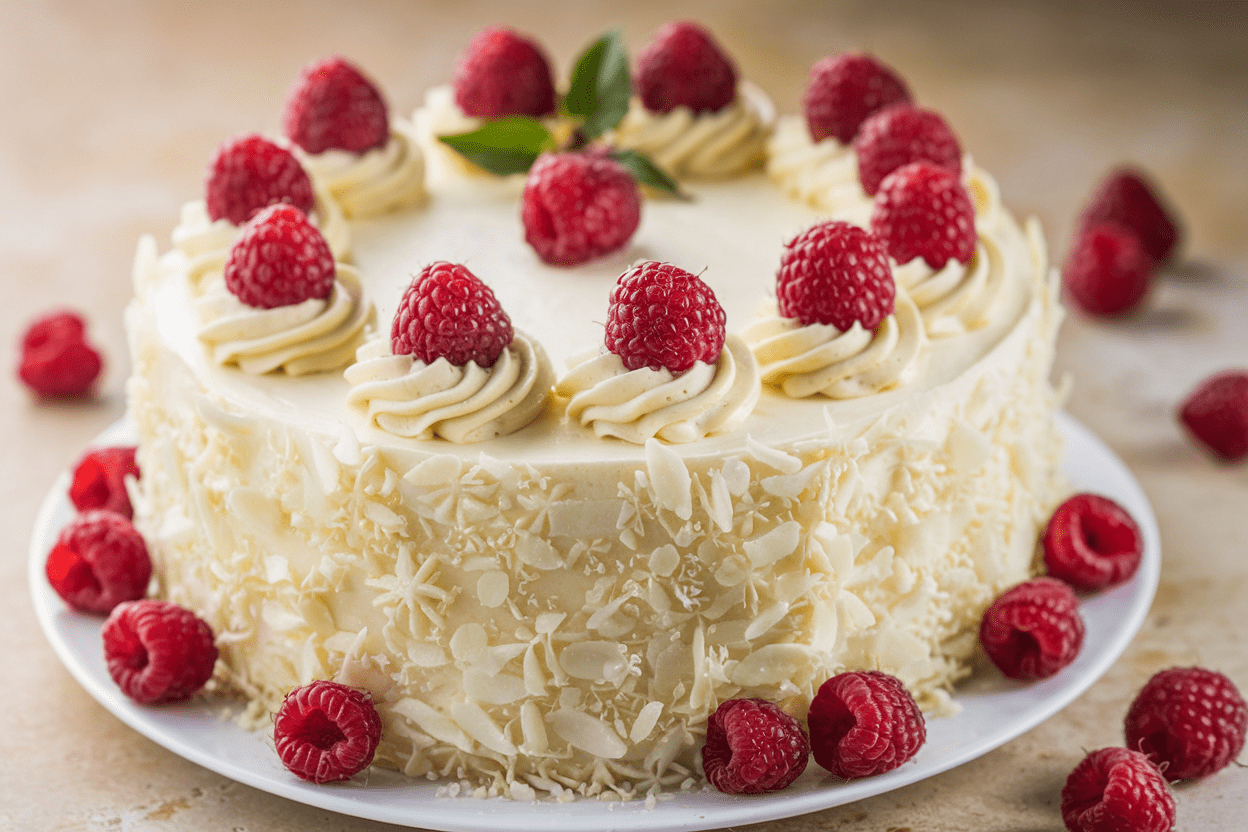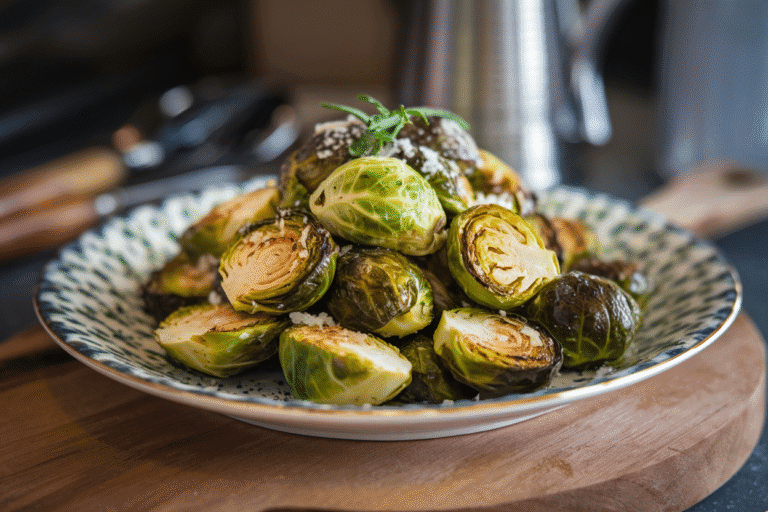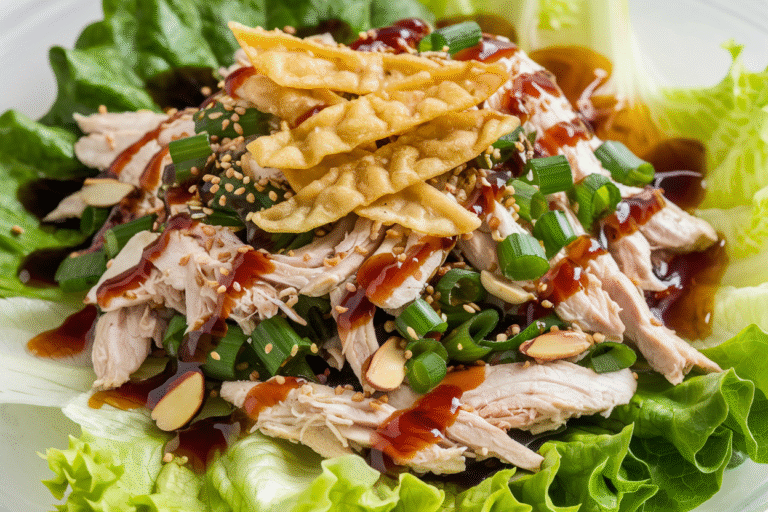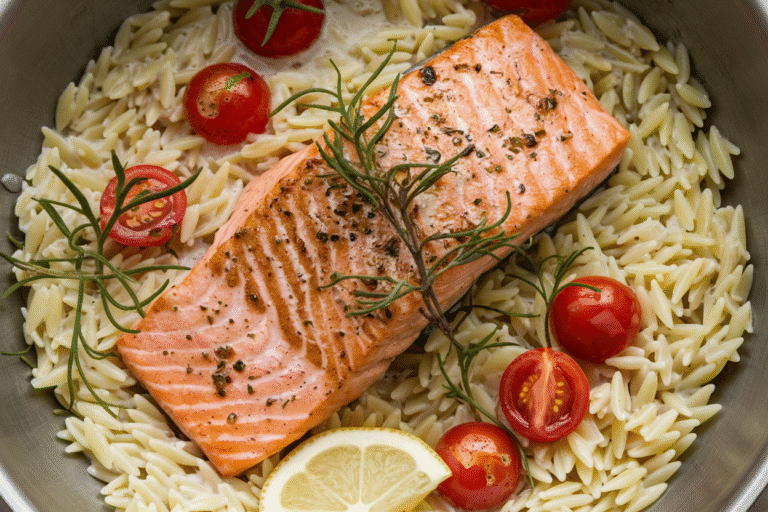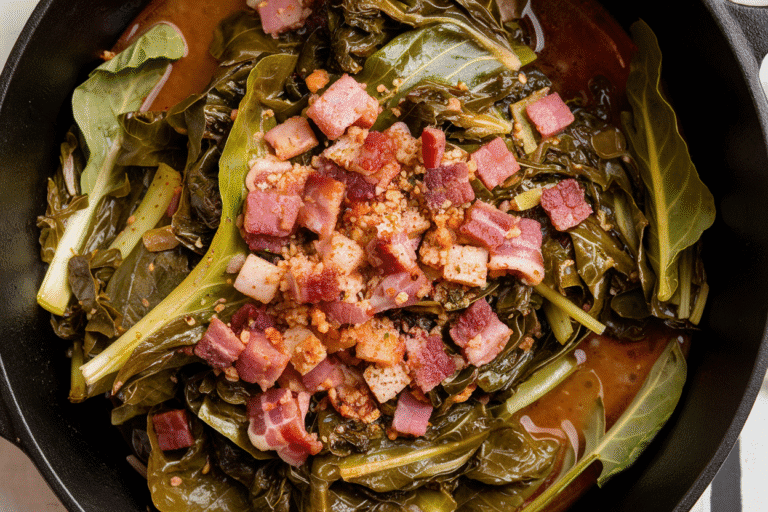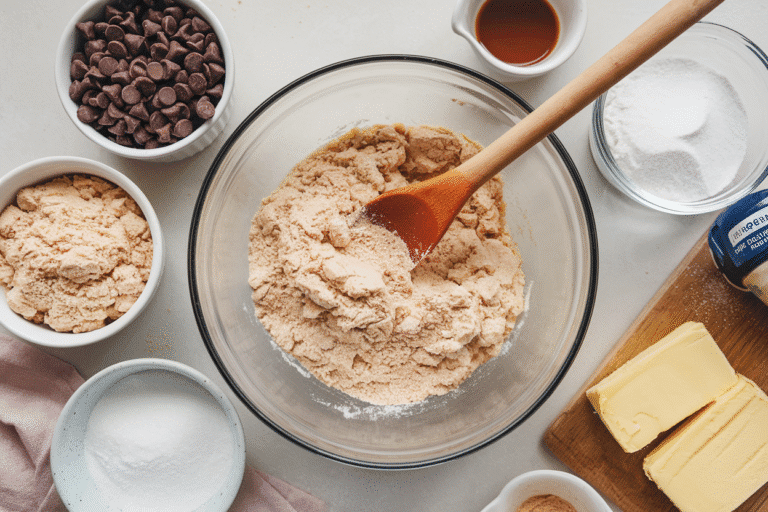Moist Vanilla Cake Recipe That Never Fails: Your New “I Can’t Believe I Baked This” Showstopper
Forget fancy techniques and Instagram-only bakes. This moist vanilla cake recipe is the one you whip up when you want guaranteed applause without stress. It’s plush, buttery, and slices like a dream—aka the kind of cake that makes people ask for the recipe before they finish chewing.
You’ll get bakery-level crumb with simple ingredients, minimal drama, and zero culinary ego required. Bake it once, and watch it become your signature flex.
Why This Recipe Works
This cake uses the perfect balance of fat, sugar, and liquid to create a tender crumb that stays moist for days. The method blends butter and oil—butter for flavor, oil for moisture—so you don’t have to pick a side.
Cake flour keeps the texture soft and airy, while sour cream and milk add richness without heaviness. A touch of cornstarch mimics professional pastry texture, and using both eggs and extra yolks gives that coveted velvety bite.
Shopping List – Ingredients
- 1 3/4 cups (210g) cake flour (or AP flour + 2 tbsp cornstarch sub)
- 2 tbsp cornstarch (omit if using true cake flour)
- 1 1/2 tsp baking powder
- 1/2 tsp baking soda
- 1/2 tsp fine sea salt
- 1/2 cup (113g) unsalted butter, softened
- 1/4 cup (60ml) neutral oil (canola, avocado, or light olive)
- 1 cup (200g) granulated sugar
- 2 large eggs + 1 egg yolk, room temp
- 2 tsp pure vanilla extract (plus 1 tsp vanilla bean paste if you’re fancy)
- 3/4 cup (180g) sour cream, room temp
- 1/3 cup (80ml) whole milk, room temp
- Optional for frosting: 1 cup (226g) unsalted butter, 3 cups (360g) powdered sugar, 2–3 tbsp heavy cream, 1 tsp vanilla
Cooking Instructions
- Prep the oven and pan: Preheat to 350°F (175°C). Grease and line two 8-inch round cake pans with parchment, or one 9×13-inch pan.
Lightly flour the sides.
- Mix the dry crew: In a bowl, whisk cake flour, cornstarch (if using), baking powder, baking soda, and salt until combined. Set aside.
- Cream like you mean it: In a stand mixer or with a hand mixer, beat butter, oil, and sugar on medium-high for 3–4 minutes until pale and fluffy. Don’t stop early—this traps air and builds structure.
- Add eggs: Beat in eggs and yolk one at a time, scraping the bowl as needed.
Mix in vanilla extract (and paste if using) until the batter looks silky.
- Emulsion magic: In a cup, whisk sour cream and milk together. You’re making a smooth, pourable dairy mix that blends evenly.
- Alternate dry and wet: Add one-third of the dry ingredients to the butter mixture, mix on low just until combined. Add half the sour cream/milk, then another third dry, remaining wet, and finish with the last third dry. Stop mixing as soon as it’s incorporated.
- Pan and level: Divide batter evenly between prepared pans.
Gently smooth tops with a spatula. If you want extra flat layers, tap the pans once to pop large bubbles.
- Bake: For two 8-inch pans, bake 22–27 minutes; for a 9×13, bake 28–34 minutes. Cakes are done when the centers spring back and a toothpick comes out with a few moist crumbs.
- Cool like a pro: Let cakes cool in pans for 10 minutes.
Turn out onto wire racks, peel off parchment, and cool completely.
- Optional frosting: Beat butter until creamy, add powdered sugar gradually, then heavy cream and vanilla. Whip until fluffy. Add a pinch of salt to balance sweetness.
- Assemble: Level layers if needed.
Spread a generous layer of frosting between cakes, then coat the outside. Chill 15 minutes to set, then add a final swoop coat. Nailed it.
Storage Instructions
- Room temp: Keep covered for up to 2 days.
The crumb stays moist thanks to the oil and sour cream.
- Refrigerator: Store tightly wrapped or in a cake keeper for 4–5 days. Bring to room temp before serving for best texture.
- Freezer: Wrap unfrosted layers in plastic and foil; freeze up to 2 months. Thaw in the fridge overnight, then frost.
- Freeze slices: For portion control (lol), freeze individually wrapped slices up to 6 weeks.
Nutritional Perks
- Balanced fats from butter and oil keep the cake moist without feeling greasy.
- Sour cream adds protein and lactic acid for tenderness and subtle tang.
- Reasonable sugar for a dessert—sweet but not cloying, so your taste buds don’t tap out.
- Portion control-friendly: The crumb holds well, so thin slices still feel satisfying.
IMO, that’s a win.
Pitfalls to Watch Out For
- Overmixing: Once flour hits wet ingredients, mix only until combined. Overmixing = tough cake. Don’t do that to yourself.
- Cold ingredients: Cold dairy causes curdling and uneven texture.
Room temp is non-negotiable.
- Overbaking: Dry cake is a tragedy. Pull it when the center just springs back and the edges barely pull away.
- Wrong pan prep: Skipping parchment invites sticking. No one likes frosting a crumb massacre.
- Low-quality vanilla: This is a vanilla-forward cake.
Use pure extract for real flavor. Imitation is… well, imitation.
Recipe Variations
- Vanilla Bean Dream: Add 1–2 tsp vanilla bean paste for specks and deeper aroma.
- Lemon-Vanilla Twist: Add 1 tbsp lemon zest and swap 2 tbsp milk with lemon juice for brightness.
- Birthday Sprinkles: Fold in 1/2 cup rainbow jimmies to the batter. Avoid nonpareils—they bleed.
- Coconut Cloud: Replace milk with canned coconut milk and add 1/2 tsp coconut extract.
Top with toasted coconut.
- Almond Bakery Style: Use 1 tsp vanilla + 1/2 tsp almond extract. Pairs ridiculously well with raspberry jam filling.
- Gluten-Free Swap: Use a 1:1 gluten-free baking flour and add 1 extra tablespoon sour cream. Bake times may vary slightly.
- Cupcake Mode: Bake in a lined muffin tin for 18–22 minutes.
Yields about 14–16 cupcakes.
FAQ
Can I use all-purpose flour instead of cake flour?
Yes. Use 1 3/4 cups AP flour minus 2 tablespoons, then add 2 tablespoons cornstarch. Sift well to lighten the texture.
Why add both butter and oil?
Butter brings rich flavor and structure, while oil keeps the crumb tender even after chilling.
It’s the best of both worlds, no compromise needed.
Can I make this recipe in a single tall layer?
You can bake in a 9-inch springform pan for 35–45 minutes. Tent with foil if browning too fast. Cool completely before slicing horizontally.
What if my batter looks slightly curdled?
It’s usually from cold ingredients.
Keep going—once you add the dry mix, the batter will smooth out. Texture will still bake up moist.
How do I keep the cake super flat for layering?
Use cake strips soaked in water around your pans, or reduce oven to 335°F and bake a few minutes longer. Trim domes only if needed.
Is there a dairy-free option?
Use vegan butter, plant-based sour cream or thick coconut yogurt, and almond or oat milk.
The crumb remains soft, though flavor changes slightly.
Can I make it less sweet?
Reduce sugar by up to 1/4 cup without wrecking the structure. For frosting, add a pinch of salt and a squeeze of lemon to balance sweetness.
How far in advance can I bake it?
Bake layers up to 2 days ahead, wrap tightly, and store at room temp. For longer, freeze and thaw overnight before frosting.
What frosting pairs best besides vanilla?
Swiss meringue buttercream for silky elegance, chocolate ganache for drama, or strawberry cream cheese frosting for a bright contrast.
Choose your vibe.
The Bottom Line
This moist vanilla cake recipe delivers bakery-level results with pantry staples and a foolproof method. It’s tender, flavorful, and flexible enough for birthdays, brunches, and “just because” Wednesdays. Master it once, and you’ve got a reliable, crowd-pleasing classic on speed dial.
Your only problem now? Fielding all the “Can you bring that cake?” texts. You’ve been warned.
